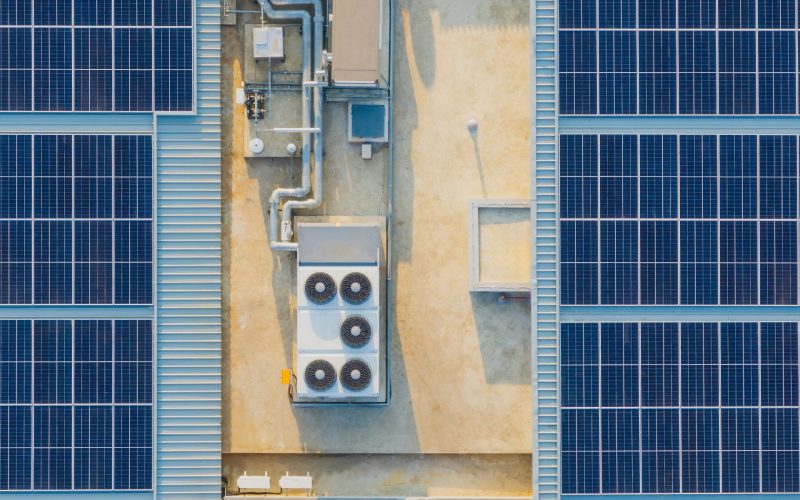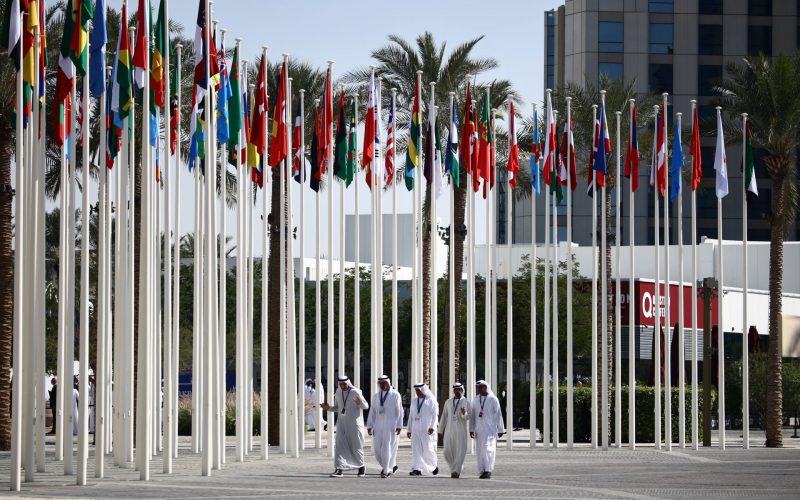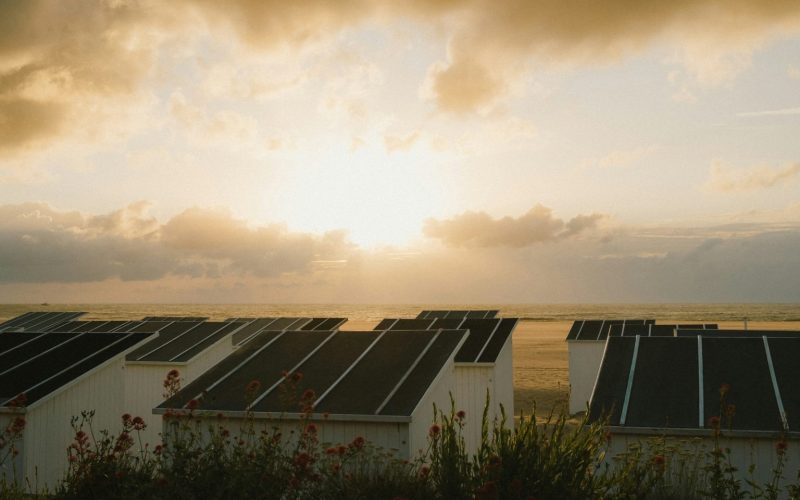Recommendations
- The Presidency, the DHET and Business Unity SA/National Business Initiative BUSA/NBI) should establish a skills governance working group to adopt economic wellbeing as a policy cornerstone and investigate skills value chains aligned with this new paradigm.
- The Presidency, in collaboration with the DHET and BUSA/NBI, should support the establishment of more green economy skills incubator hubs as a vehicle for GH2 startup experimentation, prototyping and continual learning to foster skills anticipation in new ways within the TVET ecosystem.
- Treasury should prioritise innovative financing models for sustainable TVET funding aligned with wellbeing principles to encourage interventions such as green impact bond partnerships between the DHET, BUSA/NBI and educational institutions, integrating environmental stewardship into the TVET curriculum.
- The Presidency, working with Treasury, should create a framework for adopting UBD aligned with the wellbeing economy principles linked to GH2 energy projects to advance a just energy transition and address prevailing economic challenges.
Executive summary
In South Africa’s evolving workforce, Technical and Vocational Education and Training (TVET) plays a pivotal role in addressing challenges such as inequality, climate change and unemployment. The government aims to train 30 000 artisans by 2030 to meet industrial needs while combatting unemployment. Green hydrogen (GH2), highlighted in government plans, shows promise in the energy transition. Understanding TVET–industry linkages is crucial, focusing on skills governance to anticipate skill needs and plan accordingly. Economic wellbeing, beyond job attainment, is pivotal. A shift from a jobs-centric to holistic education is pivotal, including dignified work, household care, viable environmental ecosystems and state infrastructural support. This shift fosters whole-person and societal wellbeing for local and planetary flourishing. To enhance TVET, the funding strategy should move towards dynamic education models aligning with a wellbeing economy. TVET’s role in the GH2 economy demands innovation beyond traditional models. Challenges such as land dynamics and energy democracy necessitate a progressive approach. Universal Basic Dividends (UBD) emerge as a tool to promote skills development and environmental protection. Collaborative efforts are vital, with the Presidency, the Department of Higher Education and Training (DHET) and Treasury leading this transformative journey. Through a just energy transition, South Africa can pioneer inclusive economic models while harnessing the potential of the GH2 economy.
Introduction
In the ever-evolving landscape of South Africa’s workforce, the TVET sector is pivotal in shaping the country’s socio-economic fabric by equipping post-school leavers with the skills needed in diverse industries. The aspirations of TVET graduates often face challenges amid the shifting global economic dynamics impacting South Africa, marked by persistent issues such as climate change, rising unemployment and economic instability.
Government stakeholders envision the TVET ecosystem as training 30 000 artisans and technicians by 20301Department of Higher Education and Training, “National Skills Development Plan 2030”, Government Gazette 42290 (March 7, 2019). to meet the skills demands of the anticipated industrial activity while simultaneously alleviating the unemployment crisis, especially among youth. Similarly, TVET colleges aspire to be more responsive to shifts in the environment and contribute to securing a just transition, ensuring decent jobs for existing workers and industry entrants.
The emergence of GH2 is a promising avenue in South Africa’s energy transition, underscored by its prominent inclusion in pivotal government planning documents such as the Hydrogen Society Roadmap, Green Hydrogen Commercialisation Strategy, Green Hydrogen TVET Ecosystem Just Transition Strategic Framework,2Deon Cloete et al., The South African Green Hydrogen TVET Ecosystem Just Transition Strategic Framework, Synthesis Report (Johannesburg: South African Institute of International Affairs, December 2022). South African Energy Skills Roadmap and the Just Transition Framework Implementation Plan.
Understanding the structural underpinnings influencing TVET-industry linkages is crucial, as it shapes both long-term trajectories and current decision-making processes. At the heart of this understanding lies skills governance, a multifaceted concept aimed at enhancing stakeholders’ capacities to recognise and respond to changing skill demands, foster innovation and promote economic and social development. This briefing adopts an expanded understanding of the European Commission’s definition3Jo Hawley-Woodall et al., Skills Governance in the EU Member States: Synthesis Report for the EEPO (Luxembourg: Publications Office of the EU, 2015).of skills governance, emphasising its role in navigating complex landscapes and addressing skills mismatches based on reliable labour market information.
Skills governance is the process of putting in place institutional structures, operational processes and dissemination channels that may aid stakeholder interaction and policy reaction by applying skills planning, skills foresight and skills anticipation.4Martin Bakule et al., Developing Skills Foresights, Scenarios and Forecasts: Guide to Anticipating and Matching Skills and Jobs Volume 2 (Brussels: European Training Foundation, European Centre for the Development of Vocational Training and International Labour Office, 2016). Skills foresight is a systematic process for anticipating future skills needs to inform present-day decision-making.
In contrast, skills anticipation is the process of acting on skills foresight by building proactive responses to futures intelligence using experimentation and prototyping a variety of proactive, ready-made policy options. A comparison of the key features of skills planning, skills foresight, skills anticipation and skills governance is given in Table 1.
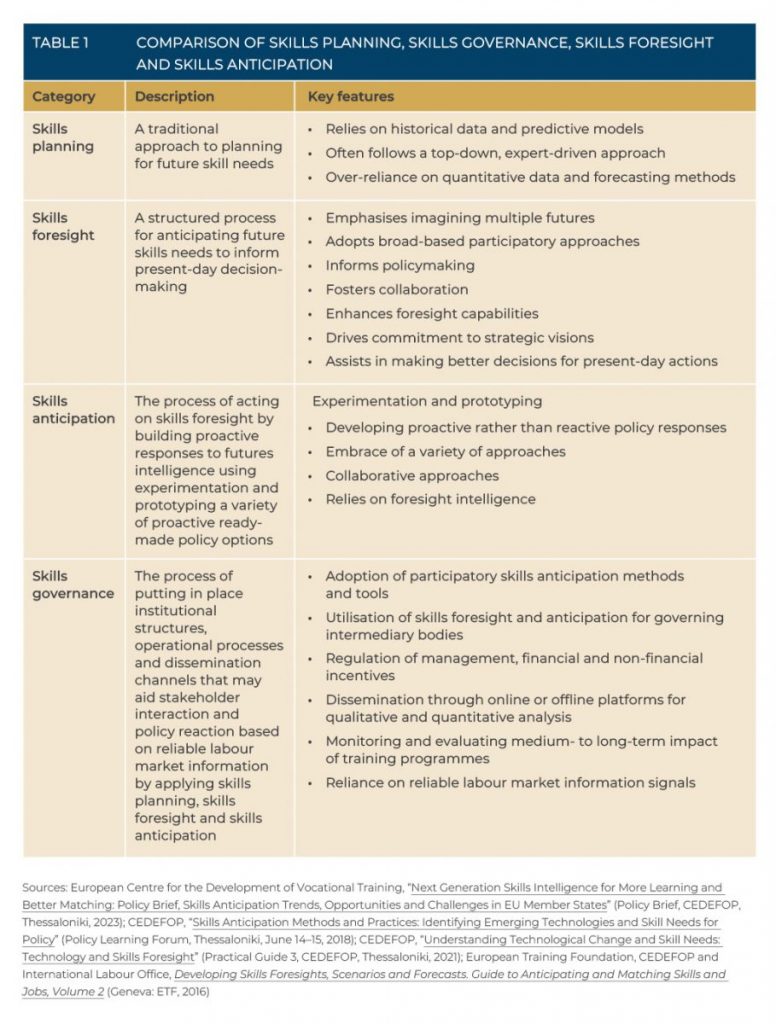
The implementation of skills governance transcends the mere adoption of emerging technologies – it signifies a departure from linear planning processes, ushering in alternative pathways for inclusive outcomes. The analogy of a mobile device is used to further explain skills governance. It is not an application such as Facebook or Instagram that is loaded onto a technological artefact. Skills governance is like a new operating system (such as Windows, macOS or Linux) impacting all applications and users in multiple ways, giving rise to outcomes that skirt the periphery of what is possible. Through collaboration and innovative strategies, skills governance offers pathways to address pressing challenges and harness opportunities in South Africa’s transition towards a GH2 economy.
This policy briefing delves into the concept and implementation of skills governance in the TVET ecosystem, elucidating its multifaceted nature and pivotal role in shaping education outcomes, labour market dynamics and industrialisation policies. It explores the challenges and opportunities posed by the emergence of the GH2 economy in South Africa, highlighting the need for systemic innovations in skills governance. By employing a participatory futures approach and conducting a three-day strategic foresight-informed workshop, several policy dialogues and interviews with diverse government and private sector stakeholders, the research identified four key priority areas. These are skills governance value chains for economic wellbeing, reframing the TVET value net, rethinking TVET funding strategies and leveraging the GH2 economy as a safety net during the just energy transition. The research underscored the importance of practical wisdom in reshaping skills governance and navigating the complexities of South Africa’s socioeconomic landscape.
Leave no one behind: Skills governance for economic wellbeing
According to Keri Facer,5Keri Facer, Futures in Education: Towards an Ethical Practice (Paris: UNESCO, 2021). it is time to find common ground in the longstanding debate on education’s role in the economy. The dichotomous debate is predicated on one side by the idea that education is about equipping young people to attain jobs in a competitive global marketplace. On the other side, it is argued that education should help young people develop relationships and capabilities to thrive in society. Facer 6Keri Facer, “It’s Not (Just) about Jobs: Education for Economic Wellbeing” (Working Paper, UNESCO, Paris, April 4, 2021). poses this critical question: ‘What sort of education will enable young people to create long-term economic wellbeing for themselves, their families and their communities?’ Here, economic wellbeing refers to the personal and collective ability to mobilise economic, social and material resources to achieve personal and collective wellbeing.
There is a pressing need to cultivate educational ecosystems that promote economic wellbeing within societies grappling with the labour market challenges prevalent in South Africa. Achieving meaningful educational inclusion demands a departure from solely prioritising ‘jobs’ toward embracing a more comprehensive understanding and broader conceptualisation of economic wellbeing. When education is perceived solely as serving the economy, it overlooks the crucial aspect of meaningful work beyond formal employment.
Economic wellbeing encompasses four essential provisions: dignified labour through paid work, household provisioning for caregiving (for children, the elderly, the sick and disabled individuals), provisioning of the commons to sustain a viable social-ecological ecosystem and provisioning by the state through essential infrastructure resources that facilitate the other three provisions. This comprehensive approach fosters responsible and engaged citizenship, contributing to the common good and fostering ecologically resilient lifestyles.
Considering broader economic aspects such as household provisioning, ecosystem services provisioning (clean water, air, soil, energy) and state provisioning through infrastructural resources, alongside acknowledging the importance of formal employment, is crucial in constructing vibrant wellbeing economies that uphold human dignity and ensure planetary survival.
As economic limitations increase, an era marked by greater scarcity and potential conflict looms. Fostering inclusion in skills governance value chains enables the TVET ecosystem and partners to collectively navigate this challenging era by embracing the new paradigm of economic wellbeing. This paradigm shift replaces excessive consumption with the four forms of provisioning, as depicted in Figure 1.
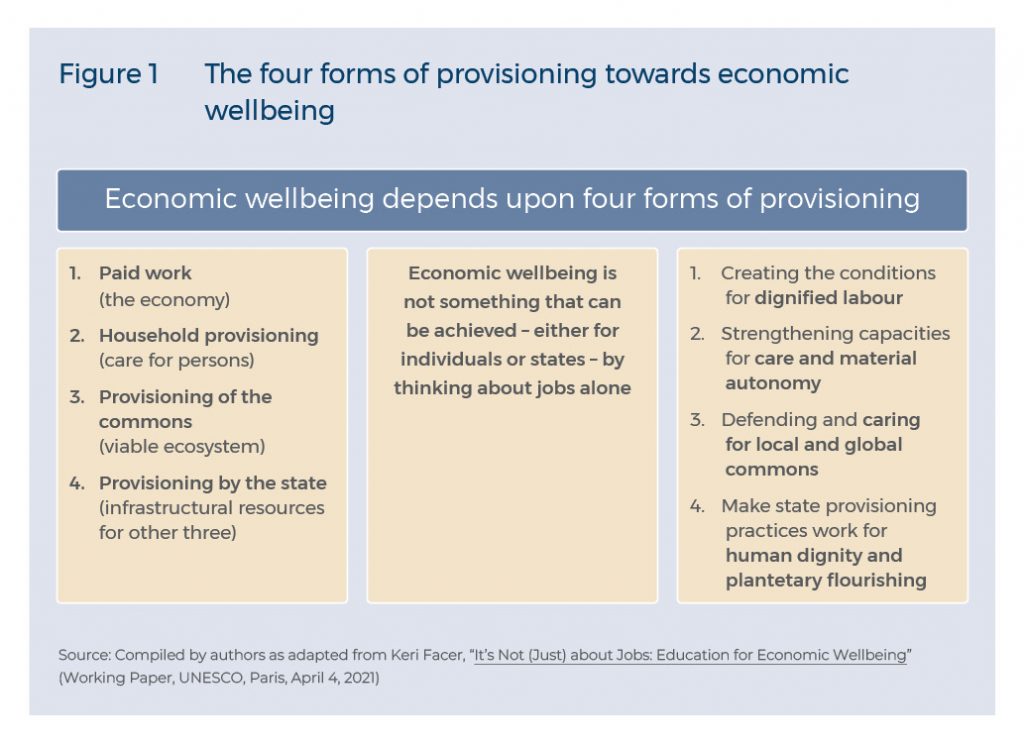
Implementing skills governance practices empowers all stakeholders in the TVET ecosystem to generate, circulate and retain wealth locally while safeguarding and investing in the natural environment. The wellbeing economy is designed to prioritise the wellbeing of people and the planet, delivering social justice within a framework of environmental sustainability.7Wellbeing Economy Alliance, Wellbeing Economy Policy Design Guide, https://weall.org/wp-content/uploads/Wellbeing- Economy-Policy-Design-Guide_Final-PRINT-WITHOUT-APPENDICES-1.pdf. The approach ensures fair access to meaningful work, supports responsible business practices, reduces inequality and enhances citizens’ lives through a human rights-based, social and climate justice approach. It extends beyond paid work in the formal economy to include the informal economy, bolstering capacities for mental and physical health while defending and nurturing local and global commons and respecting planetary and local environmental boundaries.
The TVET ecosystem operates within the confines of the current hegemonic economic paradigm – a system that prioritises paid work for employment over the three other forms of provisioning. Integrating wellbeing indicators aims to offer a more comprehensive framework for holistic wellbeing, transcending education for jobs alone. Evidence suggests that nations with high average wellbeing often exhibit traits such as democratic governance and effective and stable political systems, as well as abundant social capital and robust economies marked by low unemployment and inflation rates.8Ed Diener and Martin EP Seligman, “Beyond Money: Toward an Economy of Well-Being”, Psychological Science in the Public Interest 5, no. 1 (July 1, 2004): 1–31. However, challenges persist in implementing the wellbeing economy, particularly regarding data representation and cross-cultural applicability.
According to a new World Bank report,9Victor Sulla Facundo, Precious Zikhali and Pablo Cuevas, Inequality in Southern Africa : An Assessment of the Southern African Customs Union, Report (Washington DC: World Bank, 2022). income inequality in South Africa is racialised, gendered and spatialised, with white people more likely to find work (and work that pays better) than their Black counterparts. The adoption of the wellbeing economy in the GH2 sector holds transformative potential if implemented by national and local governments. Transitioning from a traditional growth-focused economic model to a wellbeing economy is crucial in the context of GH2 production and trade. The shift emphasises prioritising the wellbeing of people over solely maximising economic output, aligning with sustainability, social responsibility and environmental stewardship principles fundamental to the GH2 sector’s development and implementation.10Delia Villagrasa, “Green Hydrogen: Key Success Criteria for Sustainable Trade and Production” (Paper, Heinrich-Böll-Stiftung, Berlin, November 2022).
The wellbeing economy can enable TVET graduates to move beyond paid work by focusing on ecosystem regeneration and promoting democratic processes in decision-making, impacting social wellbeing and preserving the ecosystem. Examples of how TVET graduates can access provisioning in the wellbeing economy include the following.
- Respecting planetary boundaries and striving for zero harm necessitate proactive engagement in ecosystem regeneration. Incentivising the private sector to adopt circular economy practices along the GH2 value chain is crucial. This includes embracing a cradle-to-cradle approach in product design and production processes to repurpose waste into useful items meeting human needs, thereby expanding opportunities. Government incentives and support are vital to encourage regenerative behaviours andensure that the true cost of use or, in some cases, abuse of natural resources such as dumping waste into oceans and skies, is priced in a way that reflects the real costs to the public sector, communities and future generations.11Katherine Trebeck, “Building a Wellbeing Economy”, openDemocracy, June 11, 2019.
- South Africa is a relatively young democracy, highlighting a pressing need for communities to be included in decisions that impact their lives and livelihoods. It necessitates weaving into the current democratic process many more threads of deliberative democracy,12Trebeck, “Building a Wellbeing Economy”. enabling citizens to discuss and reflect together to come to decisions to enable the greater good. An example of democratic processes is participatory budgeting, allowing citizens to influence the direction of spending by talking through issues together, serving as enablers for the wellbeing economy. The purpose of the economy will be determined by more diverse voices, creating a change in the balance of power and representing a profound rebalancing of voices and interests that extend beyond elites.13Trebeck, “Building a Wellbeing Economy”.
- South Africa has already adopted policies to enhance GH2 value chains, leveraging its abundant resources and expanding industrial hydrogen use. The provisioning aspect of the wellbeing economy extends beyond just economic activities to include equitable income and wealth distribution, sustainable resource management and social inclusion in the emerging GH2 economy.14Anders Hayden and Clay Dasilva, “The Wellbeing Economy: Possibilities and Limits in Bringing Sufficiency from the Margins into the Mainstream”, Frontiers in Sustainability 3 (October 10, 2022). Core tenets of the wellbeing economy are not only preventing harm but also regenerating the planet and enabling people to flourish, laying the foundation for systemic, upstream transformation.
Immediate actions for the GH2 economy can serve as starting points towards achieving a wellbeing economy:
- Formulating targets that align economic success with societal and ecological wellbeing is essential in implementing more holistic measures of progress. The initial step involves discerning between healthy and unhealthy forms of growth, prioritising human and planetary wellbeing over consumption expansion. The Presidency should develop legislation in support of the wellbeing of future generations, ensuring inter-generational fairness in policy decisions, so that trade-offs reflect long-term sustainability principles rather than short-term economic growth.15Trebeck, “Building a Wellbeing Economy”.
- The prevailing economic paradigm emphasises maximum income and revenue generation, often resulting in increased tax collection used for providing basic services and grants to marginalised communities. The wellbeing economy proposes alternatives by broadening the distribution of economic decisions and ownership of assets, encouraging the private sector to design business models that prioritise distribution over extraction.16Trebeck, “Building a Wellbeing Economy”. Public policies to achieve this objective include preferential procurement choices, tax incentives, legal support, wellbeing adjusted reporting requirements and subsidies to promote investment, exemplified by the community ownership of key assets through cooperative business models.17Trebeck, “Building a Wellbeing Economy”. Saldanha Bay is a case in point, where communities could take ownership of key assets such as the community-owned coop harbour, highlighting the transformative approach and far-reaching benefits of exporting GH2 from this harbour. The example of Saldanha Bay showcases transformative approaches and the extensive benefits of exporting green hydrogen.
Based on the four provisions crucial for economic wellbeing, the Presidency, in collaboration with the DHET and BUSA/NBI, should establish a skills governance working group, perhaps titled the ‘Leave No One Behind Project’. This initiative. should adopt economic wellbeing as a policy cornerstone and investigate skills value chains aligned with the implementation of the four provisions of the commons. The working group should actively engage the TVET ecosystem and private sector partners to contribute to developing curricula that prioritise holistic skill development, social responsibility and environmental stewardship alongside vocational training. To support the economic wellbeing initiative, the DTI and Treasury should incentivise the private sector’s adoption of circular economy practices and develop legislation that prioritises the wellbeing of current and future generations.
Reframing the TVET Value Net: Toward economic wellbeing
The TVET Value Net (see Figure 2), serves as a conceptual framework for analysing TVET institutions and the interconnectedness among inputs, beneficiaries, competitors and partners within the TVET sector. It focuses on resource flows such as Skills Education and Training Authorities, Skills Development Facilitators and Work-Based Learning opportunities.18Department of Science and Innovation, The Status of Innovation in the TVET Colleges 2021 (Pretoria: National Advisory Council on Innovation, September 21, 2021). By contextualising the TVET Value Net within the framework of the wellbeing economy, holistic approaches and systemic innovations emerge, unlocking previously untapped value.
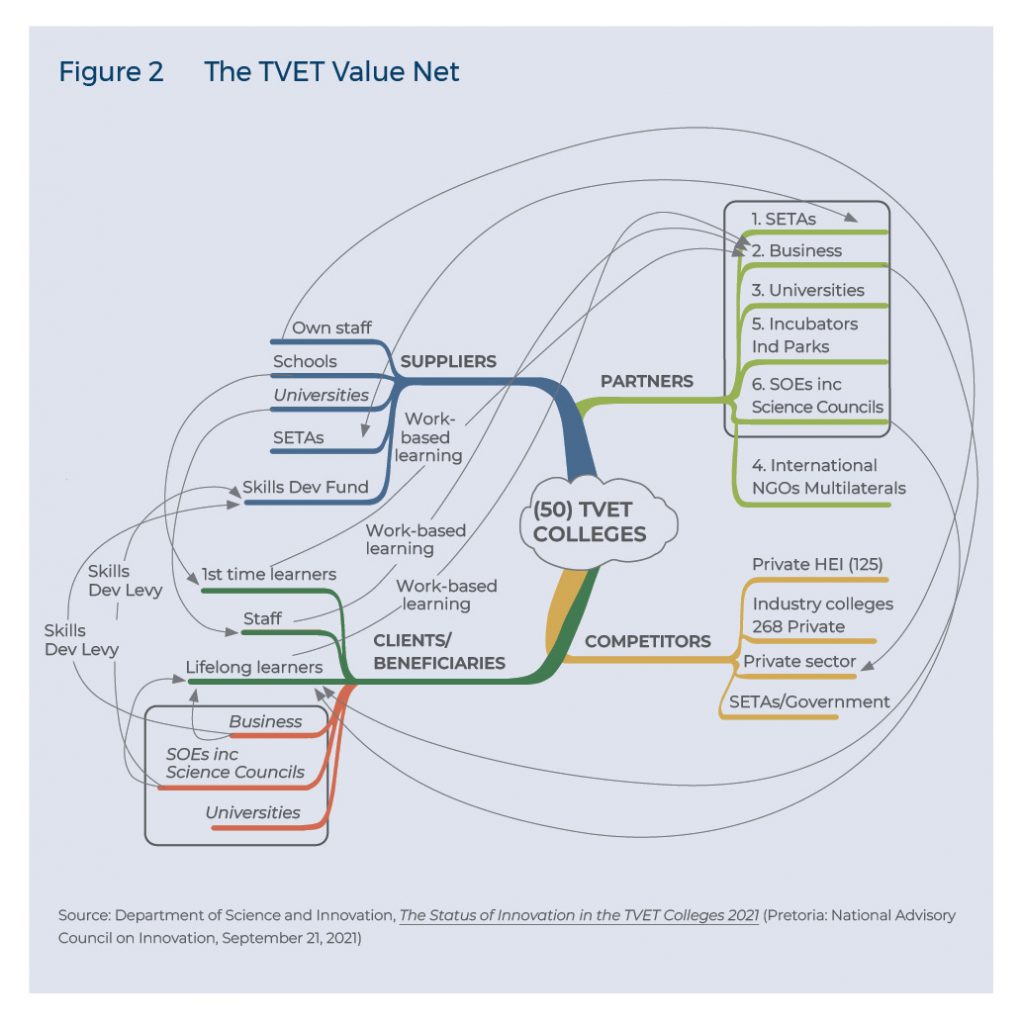
This framework underscores the collaboration with partners and beneficiaries, aiming to achieve a balance between the supply of suitably qualified skilled workers to take up employment in available jobs, as dictated by economic factors.
Integrating the provisioning of the commons for viable ecosystems in the TVET Value Net facilitates holistic approaches such as the wellbeing economy, creating new demands for skills. Exploring the interconnections and linkages among stakeholders offers the potential for expanded state provisioning, including education outcomes, infrastructure skills needs, energy transitions and the public procurement linked to these provisions to ensure more equitable distribution of resources.
Incubators, also known as innovation hubs, play a crucial role in exploring new educational system approaches such as artificial intelligence and understanding their impact on current and future work dynamics. Leveraging incubators (depicted in Figure 2) within TVET colleges provides a neutral environment for ongoing experimentation and learning. Insights and new knowledge gained can inform public policies. Moreover, incubators focus on practical knowledge and experimentation, aiming to contribute to the wellbeing economy by defending and caring for local and global commons.
Experimentation, prototypes and new forms of learning generated in incubators serve as a platform to reshape and revolutionise the current TVET curriculum into an adaptable and regenerative learning ecosystem. This approach facilitates better connections with the private sector, fosters the creation of new markets and discovers new value chains to promote economic wellbeing.
For instance, the H2 Startup Accelerator, supported by Plug and Play, is a successful example of an incubator programme aimed at igniting innovation within the hydrogen ecosystem in Europe. This accelerator programme is designed to create an open innovation ecosystem to boost the hydrogen economy in Europe, providing startups with the opportunity to present and develop their technology in areas such as water electrolysis, plant monitoring and control, fuel cell systems, hydrogen refuelling stations, hydrogen storage and transportation, and hydrogen pipelines. Similarly, the South African Renewable Business Incubator established an incubator in Atlantis, Western Cape focusing on renewable energy. Ideally, the established incubator networks can be expanded into innovation hubs to enable the wellbeing economy and GH2 advancement.
The Presidency, in collaboration with the DHET and BUSA/NBI, should support the establishment of more green economy skills incubator hubs as a vehicle for GH2 startup experimentation, prototyping and continual learning to foster skills anticipation in new ways within the TVET ecosystem.
Rethinking TVET funding strategies for improved social and ecological impact
Since the inception of democracy in South Africa, TVET policy19Department of Higher Education and Training, “Continuing Education and Training Act, 2006,” Pub. L. No. 813 (2019), https://www.gov.za/sites/default/files/gcis_document/201905/42496gov813r.pdf. has underscored the pivotal role of education in fostering economic growth and mitigating socio-economic disparities.20Seamus Needham, “TVET Policy in South Africa: Caught between Neo-Liberalism and Privatisation?”, Journal of Vocational, Adult and Continuing Education and Training 2, no. 2 (2019). Yet, despite nearly three decades of policy implementation and increased education spending, the TVET sector has not effectively addressed key priorities, particularly in disadvantaged communities. Despite education expenditure exceeding UNESCO recommendations21The UNESCO Education 2030 Incheon Declaration and Framework for Action for the implementation of the global Sustainable Development Goal 4 endorses the following key benchmarks for public spending on education: allocating at least 4–6% of GDP to education and at least 15–20% of public spending to education. as a percentage of gross domestic product (GDP), the outcomes do not align with this investment. Compounding these challenges are economic headwinds, climate change and energy supply shortages, further complicating efforts to achieve the education objectives outlined in the National Development Plan (NDP) by 2030.
Although the TVET portion of the Post-School Education and Training budget has steadily increased, reaching 13.7% in 2018/19, 15.4% in 2019/20 and 17.3% in 2020/21,22Mamphokhu Khuluvhe and Edzani Netshifhefhe, Funding and Expenditure Trends in Post-School Education and Training, Report (Pretoria: Department of Higher Education and Training, 2021). this investment is expected to rise significantly over the next three years. However, it remains inadequate to meet the NDP targets for enrolment, especially for the TVET and CET sub-sectors. While significant funding is provided to make post-school education more accessible,23South African Government, “Expanding Access to Post-School Education and Training”, February 12, 2024. the labour absorption rate remains lacking. In addition, it is expected that increased demands will be placed on TVET colleges in preparation for the renewable energy economy, placing further strain on limited resources.
As sectors transition from a 20th-century globalisation model underpinned by extractionism to a new paradigm emphasising systemic interconnectedness, attention turns to enhancing economic wellbeing on both local and global scales. The prevailing economic model prioritises material growth at the expense of the environment and neglects equity, exacerbating overconsumption and social injustices. In a wellbeing economy, TVET graduates are valued beyond mere labour, with respect for the natural environment ensuring that the pursuit of renewable energy sources such as GH2 does not exceed environmental limits for excessive profit generation. This transition necessitates preserving foundational systemic capabilities, such as deep technical skills, while systematically and equitably recalibrating energy usage, material consumption and cognition frameworks for emerging technologies.
For emerging sectors such as the GH2 economy, sustainable and innovative financing strategies that promote long-term sustainability will be required. To illustrate, independent power providers are spearheading the renewable energy transition and taking up new roles as development partners. The public sector can bolster this transition by stimulating market demand in other sectors such as transport, which is a significant contributor to greenhouse gas emissions. Supporting initiatives such as the Department of Transport’s Green Transport Strategy 2018–2050 presents opportunities for the public sector to promote GH2 in public transport such as railways and commuter transport. Other examples include the adoption of GH2 generators for heavy-industry users to alleviate electricity supply shortages. By stimulating market demand through the expanding use of GH2, a greater focus is placed on skills development, enabling both the private and public sectors to aggregate resources and leverage GH2 skills across various subsectors.
By adopting principles of the wellbeing economy, innovative finance models can be accessed that are not only focused on delivering equitable returns on investment but also geared towards social and environmental impacts. Examples to consider include the following.
- Private investments can be utilised to fund social programmes designed to support the commons through the implementation of social impact bonds.24UN Development Programme, “Innovative Financing and Business Models,” UNDP, accessed April 30, 2024, https://www.undp. org/energy/our-service-offers/innovative-financing-and-business-models. Investor returns are contingent upon on the programme’s success in achieving predefined social outcomes. This investment strategy aligns financial incentives with social impact objectives.
- Development impact bonds25Patrick Elmer et al., “Innovative Finance: Putting Your Money to (Decent) Work” (Geneva, Switzerland: International Labour Organisation, 2018), https://webapps.ilo.org/wcmsp5/groups/public/—ed_emp/documents/publication/wcms_654680.pdf. are outcome-based financing mechanisms where investors provide upfront capital for social programmes and returns are based on the achievement of predefined outcomes, such as the efficiency or effectiveness in delivering social services, contributing to the overall wellbeing of communities. An example is the Green Outcomes Fund (GOF) in South Africa to support green, sustainable and small businesses. The fund is aimed at rewarding positive impacts, such as green sector jobs created, tons of carbon sequestration, access to renewable energy for people without electricity and improved water and waste management. The entities representing both the private and public sectors have committed a total of ZAR26Currency code for the South African rand. 92.6 million ($5 million) in grant funding, which has catalysed ZAR 395.5 million ($21.6 million) in investment capital from local investment funds, totalling ZAR 488.1 million27Green Outcomes Fund, https://thegreenoutcomesfund.co.za/. ($24.5 million) mobilised through the fund for investment into South African green small, micro and medium-sized enterprises. A more recent example is the GreenCape Sector Development Agency, which was awarded funding to catalyse the expansion of the GOF.
Attracting TVET students and graduates to innovative financing initiatives linked to social and environmental impacts opens new pathways towards entrepreneurship within the emerging GH2 sector.
More focus is required to transition towards a wellbeing-orientated budget that tracks progress within broader measures of success than narrow indexes such as GDP or student throughput. For example, a redesign of budget documentation is needed to better understand how any policy, project or initiative contributed to improvements in wellbeing. This approach will require democratic methods to assess whether public provisions align with public wellbeing priorities and values. In addition, it is necessary to move beyond cost– benefit analysis, as policies should be assessed in terms of their contribution to current and future wellbeing by implementing multiple criteria and value-based assessments such as racial equity tools28Wellbeing Economy Alliance, Wellbeing Economy Policy Design. to better understand their impact.
As we seek to harness the potential of emerging sectors such as the GH2 economy, attracting TVET students and graduates to these innovative financing mechanisms opens new avenues for entrepreneurship. A concerted effort is required to align budgetary allocations with broader measures of success, ensuring that policies and investments are in line with the values and priorities of economic wellbeing.
Treasury should encourage the adoption of sustainable and innovative financing strategies and support investments aligned with the wellbeing economy. In support of this measure, we recommend that the DHET and BUSA/NBI continue to foster partnerships between educational institutions, industry stakeholders and government agencies to incorporate environmental sustainability principles into the TVET curriculum to emphasise the importance of environmental stewardship and responsible resource management in all aspects of vocational training.
Universal Basic Dividends: Leveraging GH2 wealth redistribution for a just energy transition
South Africa is proactively navigating towards a more inclusive and equitable energy transition, as evidenced in the Just Energy Transition Investment Plan, which underscores the imperative to safeguard livelihoods and address social imbalances. However, the nation’s economic landscape presents a myriad of challenges, including high unemployment, pervasive inequality, entrenched poverty and structural constraints.
Against this backdrop, the burgeoning social demands for government support, coupled with economic adversities,29World Bank, “Overview: South Africa”, https://www.worldbank.org/en/country/southafrica/overview. threaten to strain public finances. In response to these complexities, we advocate a complementary approach, particularly in the context of the energy transition, by embracing the principles of the wellbeing economy and integrating a Universal Basic Dividend (UBD). The wellbeing economy posits that effective provisioning by the state is essential to ensure the availability of infrastructure resources that support various facets of societal wellbeing.30Facer, “It’s Not (Just) about Jobs”. This UBD approach serves as a safety net to foster more inclusive policies and outcomes, particularly amid prevailing land ownership and energy security dynamics.
In the shift towards renewable energy, the utilisation and ownership of land emerge as critical factors. Currently, 340km2 of land has been repurposed for electricity generation, with an additional 1 400km2 earmarked for spacing requirements,31V Tshepang Gaeatlholwe and Kristy E Langerman, “The Land Use Impact of Renewable Energy Sprawl in South Africa,” South African Geographical Journal 105, no. 3 (July 3, 2023): 365–83. indicating the significant potential for renewable energy expansion. Projections suggest that, by 2050, direct land use could expand to 755–1 080km2, with spacing requirements reaching 10 700–16 750km2, representing 0.9–1.4% of South Africa’s total land area.32Gaeatlholwe and Langerman, “The Land Use Impact”.This underscores the importance of land dynamics in renewable energy economics. However, South Africa’s land economics are deeply entwined with political history, marked by apartheid-era
land ownership disparities. The unresolved issue of land reform, with its complex political implications, remains a contentious topic, despite constitutional measures aimed at addressing it, reflecting limited tangible progress and lingering political complexities.
Amid the inevitable transition towards a GH2 economy, the demand for common resources such as land and water intensifies. However, given the stagnant progress concerning land ownership, land for commercial or personal benefit remains unequally distributed. Property owners, both private and commercial, benefit significantly from installing solar panels and marketing surplus energy, putting them at an advantage over those without property or financial means for such investments. This disparity in access to renewable energy benefits raises concerns about policies that perpetuate energy inequality, favouring a select few in government and the private sector through land ownership and rent-seeking activities, rather than promoting energy democracy.33Energy democracy advocates for a more equitable distribution of control and benefits within the energy system, giving individuals, communities and local governments greater say in energy decisions and resources. It emphasises the democratisation of energy production, distribution and governance, aiming to ensure that energy systems are transparent, participatory and responsive to the needs and interests of all stakeholders, rather than being dominated by a few powerful entities. The intricate interplay between land ownership and the equitable distribution of the provisioning of the commons for a viable ecological ecosystem (clean soil, air and water) with specific reference to the GH2 value chains, necessitates exploring alternative economic approaches.
The intersection of land ownership and energy security, interlinked with the challenges posed by climate change, underscores the necessity for a more progressive economic approach, exemplified by the concept of a UBD34Craig Berry, “The Case for a Universal Basic Dividend” (Policy Brief 25, University College London Institute for Innovation and Public Purpose, London, 2023). and its potential synergy with the wellbeing economy. The UBD is a proposed economic policy that aims to distribute dividends to all members of society, irrespective of their socio-economic status or employment status. Unlike a Universal Basic Income, which provides a fixed income to individuals regardless of other income sources, the UBD operates by redistributing revenues generated from common resources, such as land, natural resources or intellectual property. The adoption of a UBD recognises that certain resources that are commonly owned should benefit everyone in society. This entails recognising the intrinsic value of common resources such as water and land while integrating public investment into the prevailing capitalist framework. By harnessing the value generated from the commons, the UBD seeks to ensure that everyone receives a fair share of the wealth generated. This approach aligns with principles of the wellbeing economy to support economic justice, reduce inequality and promote a sense of shared ownership and responsibility by providing a source of income that is not dependent on market participation. By linking the distribution of dividends to the use of common resources for energy generation, the UBD incentivises sustainable and equitable resource management practices.
Implementing a UBD in South Africa requires a multifaceted approach. The government should establish a framework for the distribution of dividends generated from renewable energy projects, such as GH2. This could involve Treasury or a trusted financial institution setting up financial structures. Mechanisms for funding a UBD will be tied to the profit generated from renewable energy projects. Partnerships with private sector entities involved in renewable energy development could be explored to contribute to the UBD, with a dedicated focus on expediting the GH2 economy. Treasury, working with the DHET and the Presidency, should develop clear guidelines on how UBD funds are administered and allocated, prioritising investments in renewable energy infrastructure, skills development for the green economy workforce and support for communities affected by the transition away from fossil fuels. For instance, a UBD could be allocated towards skills development in emerging sectors, re-skilling workers currently in the fossil fuel industry and thereby supporting the provisioning of the state, or the proceeds can be channelled towards pension contributions in support of care provisioning.
Given the politically charged nature of land economics35‘Land economics’ is the study of land use, natural resources, public utilities, housing and urban land issues. in South Africa, UBD implementation must navigate historical complexities and align with constitutional imperatives, thereby fostering tangible progress towards equitable resource utilisation and societal wellbeing.
The Presidency, working with Treasury, should create a framework for UBD linked to GH2 energy projects in support of ecological and social benefits. In addition, the UBD is generated from excess profits in the GH2 value chains, highlighting the need for clear and transparent guidelines for income generated for the UBD and the administration and distribution thereof.




